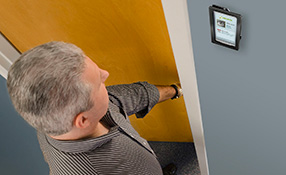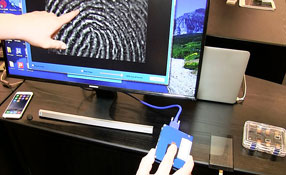Jason Chaikin

News mentions
A biometrics-embedded tablet can tag a guard upon entering the building & feed videoof what’s happening beyond secure doors as he/she moves through the facility The best w...
More fingerprint scanners being embedded into mid-range smart phones willspur the growth in availability of mobile wallets When Apple included a fingerprint scanner on the iPhon...



























